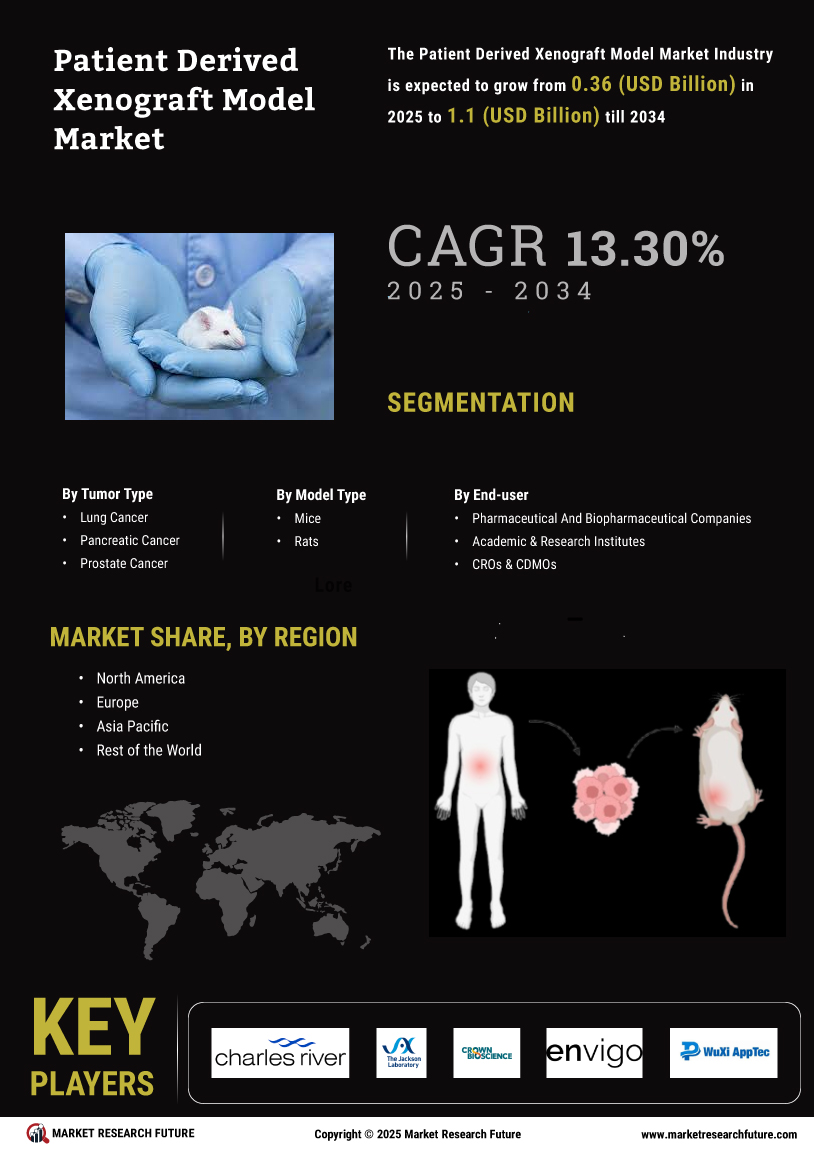Leading market players are investing heavily in research and development in order to expand their product lines, which will help the Patient derived xenograft model market, grow even more. Market participants are also undertaking a variety of strategic activities to expand their footprint, with important market developments including new product launches, contractual agreements, mergers and acquisitions, higher investments, and collaboration with other organizations. To expand and survive in a more competitive and rising market climate, Patient derived xenograft model industry must offer cost-effective items.
Manufacturing locally to minimize operational costs is one of the key business tactics used by manufacturers in the Patient derived xenograft model industry to benefit clients and increase the market sector. In recent years, the Patient derived xenograft model industry has offered some of the most significant advantages to medicine. Major players in the Patient derived xenograft model market, including Charles River Laboratories, The Jackson Laboratory, Crown Bioscience, Altogen Labs, Envigo, WuXi AppTec, Oncodesign, Hera Biolabs, XenTech, Abnova Corp. and others, are attempting to increase market demand by investing in research and development operations.
Charles River Laboratories International Inc. (Charles River), a contract research organization (CRO), provides essential products and services to speed up analysis, medication discovery, and development. It offers a variety of services for fundamental research, drug discovery, and safety assessment. The company also offers assistance with production, operations, and employment. It provides treatments for conditions affecting the cardiovascular, nervous, metabolic, inflammatory, pulmonary, musculoskeletal, and oncological systems. Charles River provides services to prestigious hospitals, universities, government agencies, pharmaceutical and biotechnology companies, and other clientele. The headquarters of Charles River are located in Wilmington, Massachusetts, a city in the US.
WuXi AppTec Co Ltd (Wuxi AppTec) is a pharmaceutical and medical equipment outsourcing company. It provides clinical research, oligonucleotides and peptides, cell therapy, gene therapy, small molecule drugs, as well as clinical and regulatory services. WuXi AppTec also offers services for small molecule pharmaceutical research and development, advanced medicines, medical devices, lab testing, bioanalytical, chemical, and toxicological analysis, as well as fully integrated testing and testing services. The company has facilities for production and research in South Korea, the US, and China. Wuxi AppTec is headquartered in Shanghai, China.




















